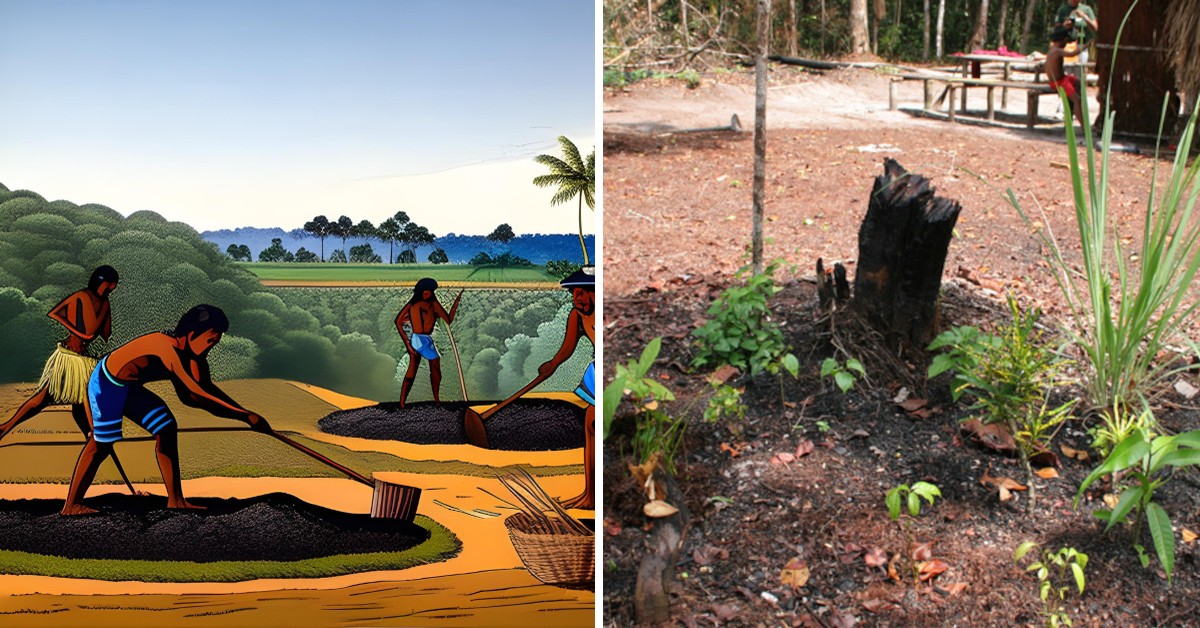Terra preta, the black gold of ancient Amazonians, still exists today and it is actually growing.

If you are interested in soil fertility and sustainability, you may have heard of terra preta, also known as Amazonian dark earth or Indian black earth. This is a type of very dark, fertile soil found in some regions of the Amazon Basin, where the native soil is usually poor and acidic. Terra preta is rich in nutrients, organic matter, minerals and beneficial microorganisms, making it ideal for growing crops and maintaining soil health. But what is the origin of this remarkable soil and how can we learn from it?

Terra preta (which means “black soil” in Portuguese) is not a natural phenomenon, but a result of human intervention. Scientists believe that it was created by ancient Amazonian civilizations between 450 BCE and 950 CE, who practiced slash-and-burn agriculture and added a mixture of charcoal, bones, broken pottery, compost and manure to the low-fertility soil. The charcoal, which gives the soil its dark color, is especially important for its properties:
- It has a high carbon content, which enriches the soil with organic material and improves its texture.
- It is porous, so it retains nutrients and prevents them from leaching during heavy rain.
- It attracts beneficial microorganisms, which help decompose organic matter and release nutrients.
- It requires less fertilizer and shorter fallow periods without crops.
- It can last for centuries.

Terra preta soils are characterized by the presence of low-temperature charcoal residues in high concentrations, as well as high quantities of pottery shards, plant residues, animal feces, fish and animal bones, and other materials. They are usually found in patches surrounded by common soil (terra comum), which is infertile and prone to nutrient loss.
Terra preta zones are evidence of the existence of large and complex Amazonian societies before the arrival of Europeans, who brought diseases that decimated the indigenous population.

Interestingly, terra preta soils have not only persisted but also expanded over time. This is because they provide a favorable environment for microorganisms that continually incorporate more organic materials into the soil. The result is a persistent soil that retains key nutrients and water, making it highly productive and resilient.

Terra preta soils have attracted the attention of researchers and farmers who want to replicate their benefits for modern agriculture. Some of the advantages of using terra preta are:
- It can improve crop yields and quality.
- It can reduce greenhouse gas emissions by sequestering carbon in the soil.
- It can enhance soil biodiversity and ecosystem services.
- It can mitigate soil degradation and erosion.
- It can adapt to climate change by increasing water retention and reducing temperature fluctuations.

To make terra preta, one of the main ingredients is biochar, which is charcoal produced from biomass (such as wood, crop residues or animal waste) through a process called pyrolysis. Pyrolysis involves heating biomass in a low-oxygen environment to produce biochar, syngas and bio-oil.
Biochar can then be mixed with compost or manure and applied to the soil.

However, making terra preta is not as simple as adding biochar to any soil. There are many factors that influence the quality and effectiveness of biochar, such as the type of biomass used, the pyrolysis conditions (temperature, time, etc.), the characteristics of the native soil (pH, texture, etc.), and the interactions with other soil components (microbes, plants, etc.).
Therefore, more research is needed to understand how to optimize the production and application of biochar for different soils and climates.

Terra preta is a fascinating example of how humans can create and maintain fertile soils in harmony with nature. By learning from this ancient wisdom and applying it to modern challenges, we can improve our food security and environmental sustainability.
Sources: 1, 2, 3
